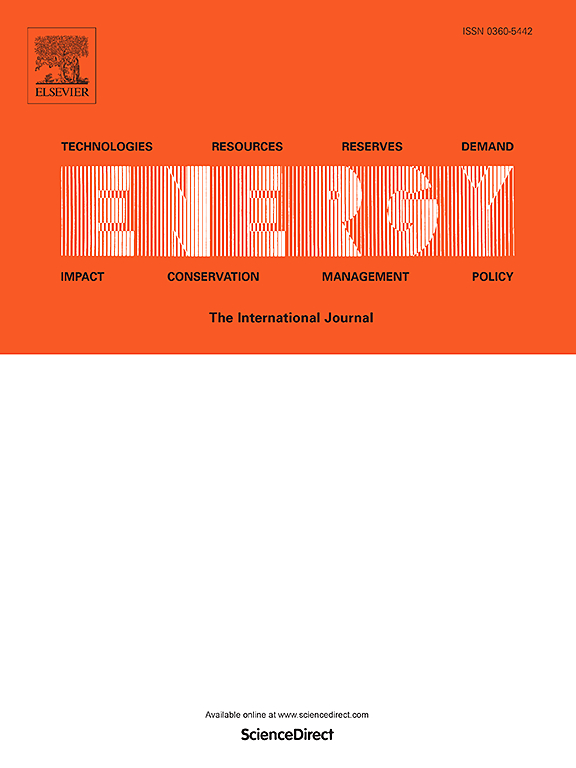Enhancing parameter prediction in gas-fired boiler systems through node similarity-based feature aggregation
IF 9
1区 工程技术
Q1 ENERGY & FUELS
引用次数: 0
Abstract
Accurate sensor network prediction is crucial for improving industrial boiler efficiency and safety. While existing predictive models show promise, they are constrained by several limitations: (i) insufficient integration of interpretable multi-level spatiotemporal information, (ii) over-reliance on static topologies and shallow features, and (iii) limited continuity and adaptability in complex environments. To address these challenges, we propose a novel framework to improve parameter prediction in gas-fired boiler systems through node similarity-based feature aggregation. First, we apply a node similarity-based multi-level aggregation strategy for interpretable multi-scale integration. Next, dynamic graph learning, utilizing a higher-order graph convolutional network, captures the evolving relationships between sensors and time steps. Additionally, continuous modeling is facilitated by a spatiotemporal ordinary differential equation solver, which overcomes the limitations of discretized time steps. Real-world evaluations show our approach improves accuracy and robustness, even with sensor failures. Furthermore, the continuous model supports predictions at any time step. This approach provides a foundation for data-driven parameter prediction and the modeling of interacting industrial components.
基于节点相似性的特征聚合增强燃气锅炉系统参数预测
准确的传感器网络预测对于提高工业锅炉的效率和安全性至关重要。虽然现有的预测模型显示出希望,但它们受到以下几个限制:(i)可解释的多层次时空信息集成不足,(ii)过度依赖静态拓扑和浅层特征,以及(iii)在复杂环境中的连续性和适应性有限。为了解决这些挑战,我们提出了一个新的框架,通过基于节点相似性的特征聚合来改进燃气锅炉系统的参数预测。首先,采用基于节点相似度的多级聚合策略实现可解释的多尺度集成。接下来,动态图学习,利用高阶图卷积网络,捕捉传感器和时间步长之间的演变关系。此外,利用时空常微分方程求解器进行连续建模,克服了时间步长离散化的局限性。现实世界的评估表明,即使在传感器故障的情况下,我们的方法也能提高准确性和鲁棒性。此外,连续模型支持在任何时间步长的预测。该方法为数据驱动的参数预测和交互工业部件的建模提供了基础。
本文章由计算机程序翻译,如有差异,请以英文原文为准。
求助全文
约1分钟内获得全文
求助全文
来源期刊

Energy
工程技术-能源与燃料
CiteScore
15.30
自引率
14.40%
发文量
0
审稿时长
14.2 weeks
期刊介绍:
Energy is a multidisciplinary, international journal that publishes research and analysis in the field of energy engineering. Our aim is to become a leading peer-reviewed platform and a trusted source of information for energy-related topics.
The journal covers a range of areas including mechanical engineering, thermal sciences, and energy analysis. We are particularly interested in research on energy modelling, prediction, integrated energy systems, planning, and management.
Additionally, we welcome papers on energy conservation, efficiency, biomass and bioenergy, renewable energy, electricity supply and demand, energy storage, buildings, and economic and policy issues. These topics should align with our broader multidisciplinary focus.
 求助内容:
求助内容: 应助结果提醒方式:
应助结果提醒方式:


